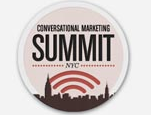Brands
Native Advertising Promoted as Path to Consumers
As ad click-through rates steadily decline, native advertising is a natural solution to spreading brand awareness and fostering authentic audience connections. But what exactly is native advertising?
 At Federated Media’s Conversational Marketing Summit this week in New York, Dan Greenberg explained it as visually integrated advertising that is driven by choice and content that users value.
At Federated Media’s Conversational Marketing Summit this week in New York, Dan Greenberg explained it as visually integrated advertising that is driven by choice and content that users value.
Later in Tuesday’s session, Jack Krawczyk of StumbleUpon defined native advertising as “original content enabling a company to connect with consumers and advertise its brands.”
Basically, think of Buzzfeed’s “featured partner” posts or promoted tweets embedded in your feed. Native advertising flows into existing content, creating an enticing and seamless user experience. As you transition from disparate ad buys to more thoughtful content contribution, keep the following points in mind:
1. Pay Attention to Your Headline
 Peter Koechley, founder of Upworthy, advised “optimizing for virality” in his presentation at the summit. Koechley defined virality as “shareability of content times clickability of the packaging.”
Peter Koechley, founder of Upworthy, advised “optimizing for virality” in his presentation at the summit. Koechley defined virality as “shareability of content times clickability of the packaging.”
Are you sharing something worthwhile, and does its initial presentation convey that? Consider packaging in terms of your content’s channel. If you’re looking to surface on search, fill your headline with trending keywords. If Facebook is your ad’s destination, Koechley suggests omitting something important from the title: “Make people curious.”
Headlines are key in spreading ultra-shareable content, and the right headline will better integrate branded material into a native campaign.
2. Integrate Content Across Channels
 Don’t make the mistake of taking the same piece of content and distributing it on every site and platform you can. Instead, distribute multiple units that work together and make sure each piece is functional in its individual venue.
Don’t make the mistake of taking the same piece of content and distributing it on every site and platform you can. Instead, distribute multiple units that work together and make sure each piece is functional in its individual venue.
Like with headlines, a sponsored post for Gawker requires adequate snark, whereas sponsored work for Adweek serves its audience best by being more informative and industry-focused.
3. Uphold User Experience
In his presentation, Kraczyk half-joked, “We associate pre-roll ads with dictatorship.” AMC would never start the season premiere of Mad Men with an ad; why do we condone pre-roll ads on YouTube? One of native advertising’s strengths is its seamlessness.
“There’s no ad opportunity in interrupting people online,” Kraczyk added.
Instead, when brands produce interesting integrated content, they give users the choice of engagement. Rather than forcing users to watch a trailer (which will be muted and ignored), The Dictator is far more likely to get a click-through on its latest Buzzfeed post: “The 25 Most Ridiculously Dressed Dictators.”
Customizing content for each channel and putting thought into presentation helps create a positive, electable user experience, meaning your brand gains credibility and appreciation for speaking the native language.
Image courtesy of ewen and donabel/flickr, slgckgc/flickr

Get better at your job right now.
Read our monthly newsletter to master content marketing. It’s made for marketers, creators, and everyone in between.




